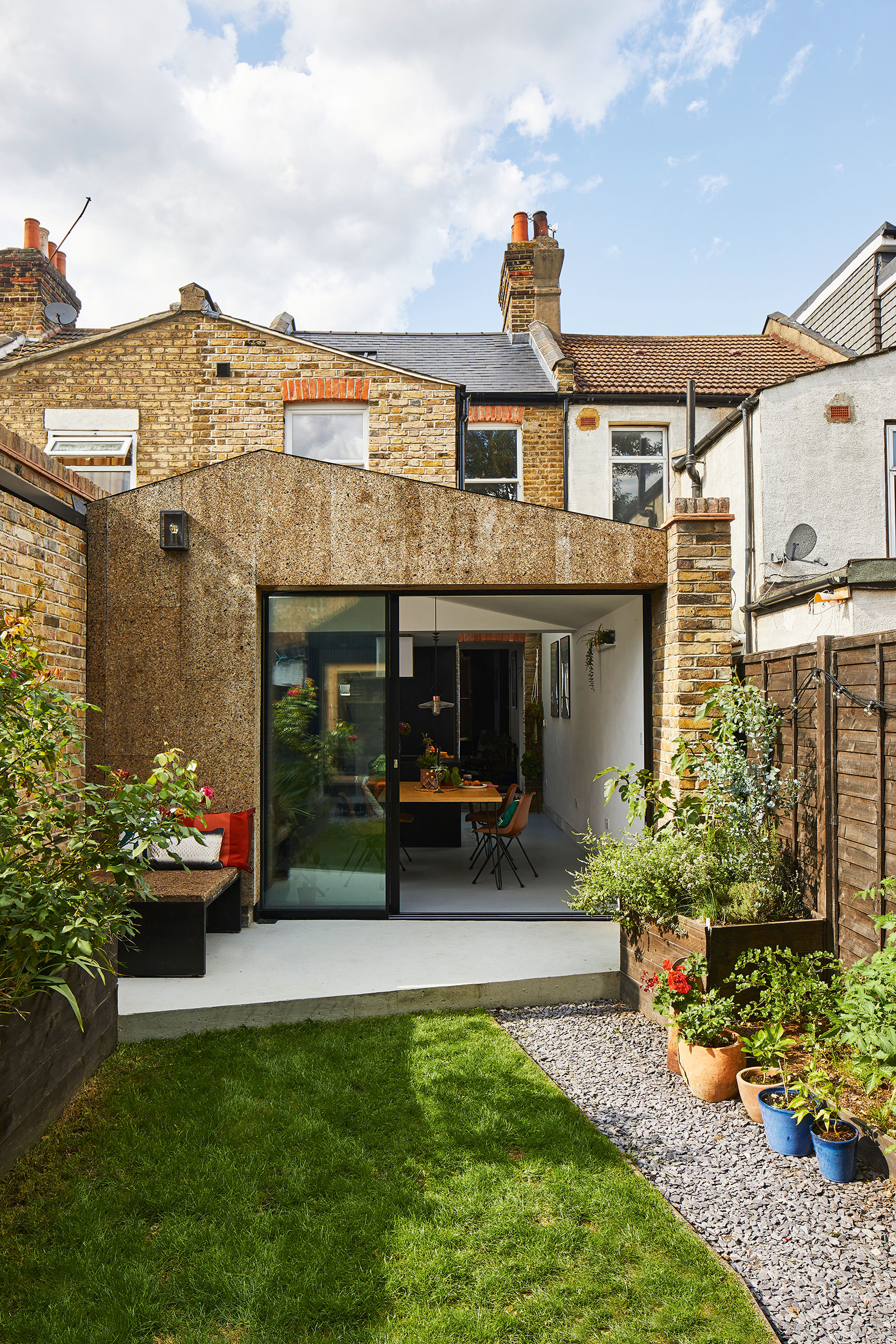Building regulations and the Building Safety Act: The ultimate guide
The building regulations can be more than a little confusing to navigate. Our simple, updated, guide for 2025 explains everything you need to know, including what any changes could mean for you

- What are building regulations?
- The Building Safety Act 2022
- Getting building regs approval
- The building regulations
- Building regs for extensions
- Application fees
- Application types
- Building regs drawing costs
- How long building regs take
- Building regs approval
- Your builder and building regs
- Getting a completion certificate
- FAQs
Building regulations apply whether you are self building, renovating or extending. In fact, the majority of construction work – even fairly minor alterations – will require building regulations compliance of some kind.
Of course, if you're building a new home entirely from scratch, you'll be required to get to grips with a lot more of these regulations than those looking at building regulations for extensions or if you're just undertaking some light remodelling to your home.
There have been some important changes to several documents concerning those building or altering their homes – changes to Part L and Part O were particularly notable and within this guide, we'll take a quick look at what these new rules could mean for you.
What are building regulations?
Building regs are a set of standards designed to ensure a property is safe and comfortable to live in, and, increasingly, energy efficient and mitigating its contribution to carbon emissions.
It is important to realise that whilst the building regulations are law and compliance is mandatory, how to achieve this is not set in stone – the Approved Documents, which underpin the building regulations are intended to provide guidance about how to satisfy the building regulations in common building situations, but they do not cover all scenarios.
Compliance may need to be proven in other ways, such as providing structural calculations by a qualified structural engineer to convince the Registered Building Control Approver, that what’s been built is satisfactory. For most projects, following the guidance set out by the Approved Documents is sufficient, however, they tend to evolve as housing policy does, and in June 2022, there were some major updates that you should be aware of.
These changes affected Part L and Part F. Two new Approved Documents were also introduced: Part O and Part S.
Updates to Approved Documents Part L (Conservation of Fuel and Power) and Part F (Ventilation) strengthen energy efficiency standards, explains expert Mark Stevenson. The update requires higher fabric performance, improved U-values, and reduced carbon emissions (31% lower than previous standards). A new requirement is to provide photographic evidence of insulation and airtightness details to prove compliance with design requirements..
"Part O is the new regulation covering overheating (I guess this should be fairly easy to remember)," adds energy expert David Hilton, "which is a long overdue update. It not only looks at mitigating solar gain (heating due to direct sunlight) but also other causes of overheating due to uninsulated heating pipes, cylinders or lack of heating system controls."
Part S, however, focusses on electric vehicle charging points. "As petrol and diesel vehicles get phased out we are going to see more and more electric vehicles on our streets, so having electric car charge points properly planned and installed is now a ‘must-have’ rather than a ‘nice-to-have’ addition to the services in the home," says David.
Here's what you need to know about building regulations as a self builder, renovator or home extender.

Mark Stevenson has worked as a construction professional for over 30 years and following an extensive career in housebuilding. He is currently chief operating officer for Custom Build Homes and chair of the National Custom and Self Build Association. He previously worked as managing director for Potton, helping self builders build their own homes.

With more than 35 years of expertise, David is a seasoned renewables and ventilation installer, recognised for his longstanding contributions to Homebuilding and Renovating magazine. Holding membership in the Gas Safe Register and armed with a Masters degree in Sustainable Architecture, David stands as an authoritative figure in sustainable building and energy efficiency. His extensive knowledge spans building fabrics, heat recovery ventilation, renewables, and conventional heating systems. Additionally, he serves as a distinguished speaker at the Homebuilding & Renovating Show.
The Building Safety Act 2022
The Building Safety Act 2022 introduces stricter building safety regulations, even for low-rise residential projects like self-builds. While its primary focus is on high-rise buildings, elements such as duty holder responsibilities, competence requirements, and record-keeping apply to all projects.

Need more advice or inspiration for your project? Get two free tickets to the Homebuilding & Renovating Show
For self-builders, the Act reinforces the need to manage risks from design to completion. Compliance with Building Regulations is crucial, particularly for fire safety, structure, and accessibility.
The Act strengthens enforcement powers, meaning local authorities can issue stop notices for non-compliance. Record keeping is a key part of the Act which introduced the principle of the Golden Thread – a digital record of a building’s design, construction, and safety information, ensuring accountability throughout a building’s life.
For self-builds, this means maintaining accurate plans, specifications, and material details to prove compliance with the building regulations and support future maintenance. Under the Act, duty holders must be appointed which align with those required by the CDM Regulations.
For self build projects, where the client is a Domestic Client, the main duty holders are the Principal Designer and Principal Contractor. The Principal Designer oversees the design phase, ensuring the building design complies with the building regulations.
The Principal Contractor is also responsible for ensuring work is carried out in compliance with the design and regulations and must keep accurate records as part of the golden thread of information. Self-builders taking on these roles must be competent or appoint professionals who are. Failing to meet these duties can lead to fines or enforcement action.
Getting building regulations approval
In short, if you intend to carry out any new structural work or alterations to your home, you will require building regulations approval. There is a big difference between planning permission and building regulations.
Planning approval may also be required, depending upon the alterations being undertaken or if the building is listed or located in a designation that has a restricted status such as a conservation area.
Additionally, work involving the following areas also requires approval, although in some of these cases, competent persons can self-certify their works for compliance:
- Drainage
- Heat-producing appliances
- Cavity wall insulation
- New electrics
- Replacement windows
All new homes need to adhere to building regulations too, and for this reason a building control inspector, which, after the introduction of the Building Safety Act, is now known as the Registered Building Control Approver (RBCA), will visit at key stages of the build to inspect the work and ensure it complies.
It is worth noting that there is a difference between using private building control vs Local Authority Building Control and pros and cons to choosing each route.
These stages include:
- Excavation for the building foundations
- Preparation of the ground floor oversite
- Building the DPC’s and membranes
- Laying and testing of drainage
- Structural frame check
- Roof structure
- First fix installation
- Commissioning of services and fire safety features
- At completion of the building
A completion certificate will then be issued following the final inspection and sign off by the duty holders.
The building regulations
Once you’ve secured your planning approval, the focus needs to shift to showing that your design ticks all the right technical boxes.
The main exemptions for building regulations are peripheral things such as small porches, conservatories or detached garages (up to 30m2 floor area).
The Approved Documents of the Building Regulations comprise of a series of detailed guidance manuals (ranging from Approved Document A to T) covering everything from structure and fire safety through to security and electronic communications.
The Regulations are very detailed, and can be read in full on the Communities and Local Government website.
In brief, you will need to appoint a building inspector or registered building control approver, who will ensure that your project meets building regulations and comply with these areas:
- Part A – Structure
- Part B – Fire Safety
- Part C – Contamination and damp
- Part D – Toxicity
- Part E – Sound
- Part F – Ventilation
- Part G – Hygiene
- Part H – Drainage
- Part J – Fuel
- Part K – On-site Safety
- Part L – Conservation of Fuel and Power
- Part M – Access
- Part N – Glazing
- Part O – Overheating
- Part P – Electrics
- Part S – Infrastructure for Charging Electric Vehicles
New for 2024 is Part T – Toilets. Whilst this applies from the 1 October 2024, don’t worry as its not applicable to domestic dwellings and is concerned with toilet facilities in public buildings.

Building regulations for extensions
If you are building an extension then you will most likely need building regulations approval. Most extensions will need to meet a minimum set of technical standards.
The regulations you'll need to consider are likely to be:
- Energy performance (ensuring your build is insulated enough and has good airtightness so heat doesn’t just leak out)
- Structural integrity as most extensions require foundations
- Protection against falls and unsafe walls
- Electric and gas safety as most extensions require new systems
- Fire protection which means ensuring there is safe passage from your home to a safe external area

Building regulations application fees
Most local authorities offer fee calculators on their websites. Their fees will depend on several factors including the type of work involved, size of the project and number of visits required. Private companies will negotiate their fees directly with you.
In England, Wales and Northern Ireland, once an application is lodged, work can commence on site within 48 hours.
Remember, on top of application fees, you will need to budget for plans and structural calculations, which can come in between £1,200-£4,000 plus, depending on the scale of your project.

Types of building regulation applications
Before any work can begin, you need to decide whether to make a Building Notice or full plans application.
With a Building Notice, it is possible to carry out the work without prior approval while a Full Plans application is where you submit plans and documents so they can be approved prior to work starting.
1. Full plans applications for building regulations
For more involved construction projects such as an extension or building a house, a Full Plans application is made to building control.
If you choose a Full Plans application, you will know from the start that the working drawings have been checked and approved by the building inspector and that the plans comply with the Building Regulations, subject to addressing any questions or requests for evidence.
Importantly, this means that any issues regarding non-compliance with the regulations can be thrashed out before building work actually starts.
The full plans application comprises of:
- A full description of the proposed works
- A set of technical drawings
- Structural engineer’s calculations
- A location or 'block' plan
- Thermal assessments and calculations

2. Building notice application for building regulations
With this method you’re basically promising in advance that you’ll comply with building regulations on site.
This might be feasible for some small domestic alterations or a very simple home extension but it’s not appropriate for larger or more complex projects.
If your site inspections uncover findings that contravenes the regulations while it’s being built, such as the wrong type of insulation or type of glazing, work has to be stopped or re-constructed, which could prove disruptive, as well as costly.
Remember you still need to complete a form giving details of the building work together with a site plan (1:1250 or 1:12500 scale) showing the boundaries of site and drainage details.
You may also be asked to provide marked up sketch drawings (typically copies of those used for planning) together with structural engineer’s calculations and energy performance details.
Building regulation drawing costs
For building regs drawings, expect to pay from around £1,000 for a single-storey extension, and around £1,500 for a two-storey extension, excluding additional charges for structural calculations, building control application fees and any party wall agreements.
For the average new house you could expect to pay around £4,000 to £6000, depending on the architectural service, and less if planning drawings have first been commissioned as there’s a certain amount of overlap. Large architectural practices can charge £75 or more per hour for this sort of work, and producing detailed technical drawings with a specification for a more complex bespoke new house could set you back as much as £10,000.
LABC fees are published on local authority websites and typically cost around £1,000 for a new house but less than half that for an average extension or loft conversion.

How long building regulations take
This depends on how busy your designer is. A straightforward job shouldn’t take much more than one or two weeks, unless they’re really busy.
If the engineer’s calculations are holding things up, it’s normally possible to save time by submitting them after your main application.
For building control to process a full plans application the stipulated period of five weeks should be sufficient assuming there are no major issues. Remember, you don’t have to wait for ‘plans approval’ before starting work on site, although this is a risky approach that some self builders will not want to take.
Building regulations approval
You can choose to use:
- A local authority inspector from your local council and run through Local Authority Building Control (LABC)
- A registered building control approver from a government-approved private building inspection company. Around 20% of all approvals are now handled privately, with the only recourse to the local authority being the submission of the initial notice informing them that they will be undertaking the building control inspections.
This is the case for those that self build, as well as all manner of projects such as renovating a house, extensions and loft conversions.
Since 6 April 2024, all private sector businesses that want to do building control work in England and Wales under the Building Act 1984 (as amended) must be registered with the Building Safety Regulator (BSR).
A Registered Building Control Approver and a Local Authority Building Inspector will carry out the same duties. They will check plans for compliance when a full plans application is made, and carry out site inspections when requested to check work on site at various stages.
However, under the Building Safety Act only the Building Safety Regulator or your local authority has powers of enforcement. A Registered Building Control Approver must hand the project over to the local authority if there are problems with the project that cannot be resolved informally.
There's very little difference in cost whether using a Registered Building Control Approver or working directly with the local authority.
Your builder and building regs
While all good builders will know how to ensure their work meets the building regulations, the process of signing off the work has changed under the new Building Safety Act.
Whilst Registered Building Control Approvers still undertake compliance focused inspections, the builder as the Principal Contractor will have to keep accurate records of compliance and is expected to sign off at the end of the build to confirm that the project is compliant with regulations.
Getting a completion certificate
When the building is completed to the satisfaction of the inspector, a completion certificate will be issued.
This is a vital document that must be retained alongside the written planning permission for use if you ever want to sell. It is also required in order to release final funds from lenders, obtain the warranty certification and in order to reclaim VAT (if applicable).
The completion certificate will not be available until all your certificates have been passed to the building control officer and a final site inspection has passed. The relevant certificates vary from one project to another but usually include:
- Electrical safety
- SAP rating
- Air pressure test
- Boiler installation and hot water services
- Water efficiency calculations
- Security
- Fuel storage
- Remediation of contaminated land
- Chimneys and open flued appliances
- MCS certification for renewable technologies
Under the Building Safety Act 2022, both the Principal Designer (PD) and Principal Contractor (PC) have a legal duty to sign off on compliance before a project can be handed over and deemed complete.
This requirement ensures that buildings meet Building Regulations and that safety risks have been properly managed throughout design and construction.

FAQs
Do I need a structural engineer?
The plans required for building control are considerably more detailed than those submitted for planning.
Whether you choose to submit a Full Plans application or not, building control normally require calculations from a qualified structural engineer who you can employ at the technical design stage.
What’s more if you plan to make any structural alterations to your existing house, such as knocking down internal walls and openings, these may also need calculations.
Depending on the size and complexity of the project, and whether site visits are needed, engineer’s fees typically range from around £400 for run-of-the-mill extensions to £3,000 plus for more complex houses.
Can I sell my house without building regs?
Any diligent solicitor will ensure that evidence of building regulations compliance such as a completion certificate is provided during a house purchase.
If you don't have a record of this for some reason, perhaps from work carried out by a previous owner, there are a few ways this can be tackled.
A regularisation certificate involves a retrospective application in which an inspector checks the build or alteration, but against the regulations that were in place at the time the work took place.
Indemnity insurance is also an option if the work has not been signed off, or paperwork is missing. This safeguards the property from legal action such as a building regulations enforcement from the local authority for the new owner.
However, this course of action does not offer the peace of mind that the work is safe, and with the property's structure and fire safety at risk, it's worth further exploration.
Obtaining planning permission is very different to making sure your project complies with building regulations and you can potentially find yourself in a tricky spot if you have one without the other. It is therefore worthwhile speaking to a planning expert separately as well as looking at permitted development and planning reforms, if you haven't done so already.
Bring your dream home to life with expert advice, how to guides and design inspiration. Sign up for our newsletter and get two free tickets to a Homebuilding & Renovating Show near you.
David is one of the UK's leading self build and plotfinding experts, and a serial self builder who has been building homes for 50 years. The author of Building Your Own Home, now in its 18th edition, and the Homes Plans Book, David spent decades as a speaker and expert at self build exhibitions such as the Homebuilding & Renovating Show. He also helped countless budding self builders find their dream building plots as part of his long-running Plotfinder Challenge series in Homebuilding & Renovating magazine. He has self built 14 homes.

